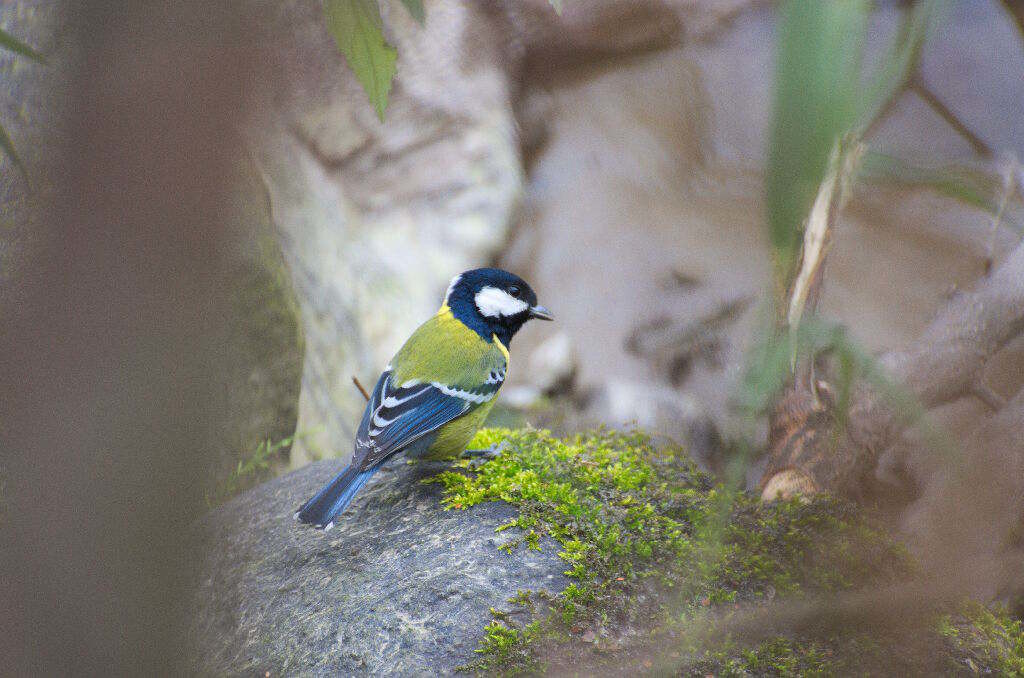
Parus monticolus (Green backed tit)
Parus monticolus, commonly known as the Green-backed Tit, is a small, colorful passerine bird often observed in the forests of the Great Himalayan National Park (GHNP). This species is distinguished by its vibrant green back, yellow underparts, and striking black head with white cheeks. The Green-backed Tit is a year-round resident in GHNP and plays an important role in the park’s forest ecosystem.
This tit species is commonly sighted in mixed deciduous and coniferous forests, particularly in the Tirthan Valley, Sainj Valley, and eco-zones near Gushaini. Its preference for forest canopies and wooded slopes at altitudes between 1,500 and 3,000 meters makes it an exciting species for birdwatchers and ornithologists alike.
Habitat and Distribution in GHNP
The Green-backed Tit thrives in temperate broadleaf forests, oak-dominated woodlands, and rhododendron zones within the Great Himalayan National Park. It is most often seen flitting between branches or clinging acrobatically to tree trunks in search of food. These birds prefer semi-open forest patches, where sunlight filters through the canopy and supports a healthy insect population.
Behavior and Diet
Parus monticolus is an active and agile feeder, relying heavily on a diet of insects, caterpillars, spiders, and occasionally seeds. It forages alone or in small mixed-species flocks and is known for its constant, high-pitched calls.
During the breeding season, which typically begins in spring, the Green-backed Tit builds its nest in natural tree cavities or old woodpecker holes. The female lays about 5–7 eggs and incubates them while the male helps by feeding her and protecting the territory.
| Common name | Green-backed Tit |
| Scientific name | Parus monticolus |
| Family | Paridae (Tits) |
| Description | Green backed tit having green coloration on mantle and back the underparts of this bird is yellow. It is commonly found in Himachal Pradesh and is also a resident bird of Great Himalayan National park. |
Conservation Notes
Although not currently threatened, the Green-backed Tit relies on healthy forest ecosystems. The protected landscapes of the Great Himalayan National Park are critical in maintaining stable populations. The bird’s sensitivity to habitat disturbance makes it a useful indicator species for the region’s ecological health.



